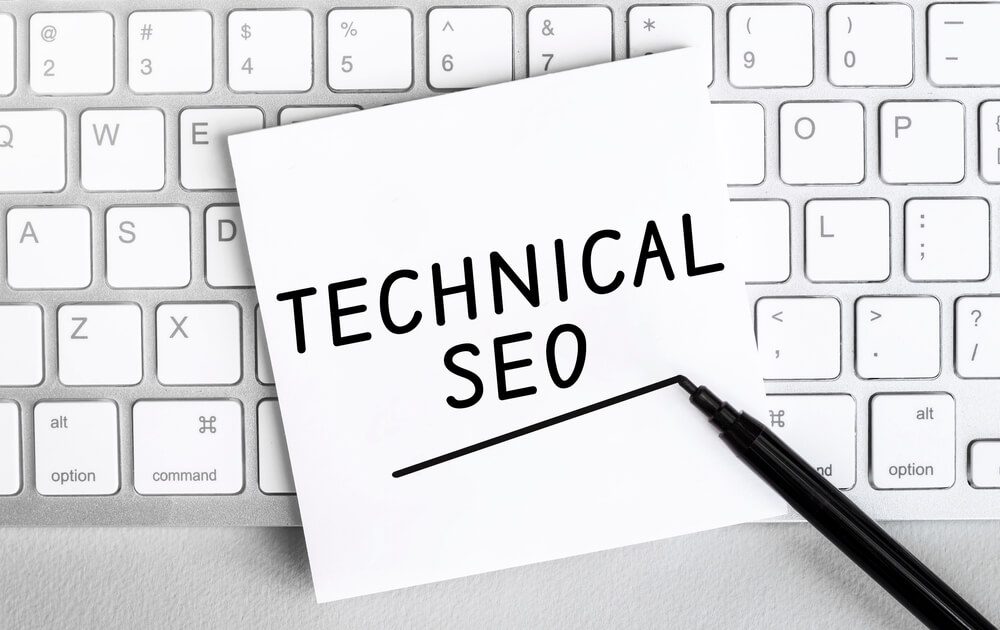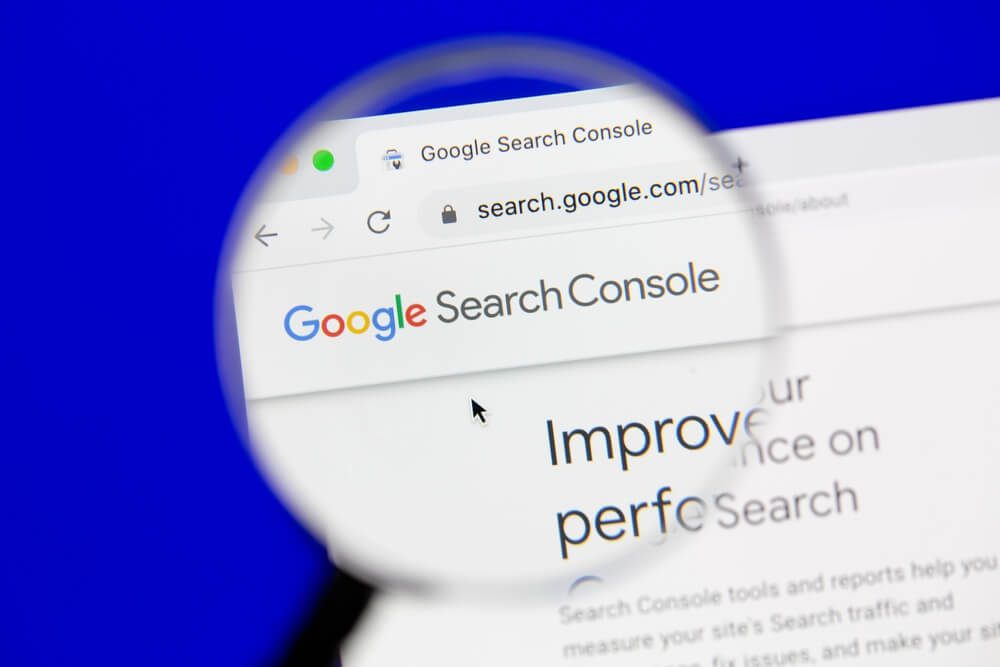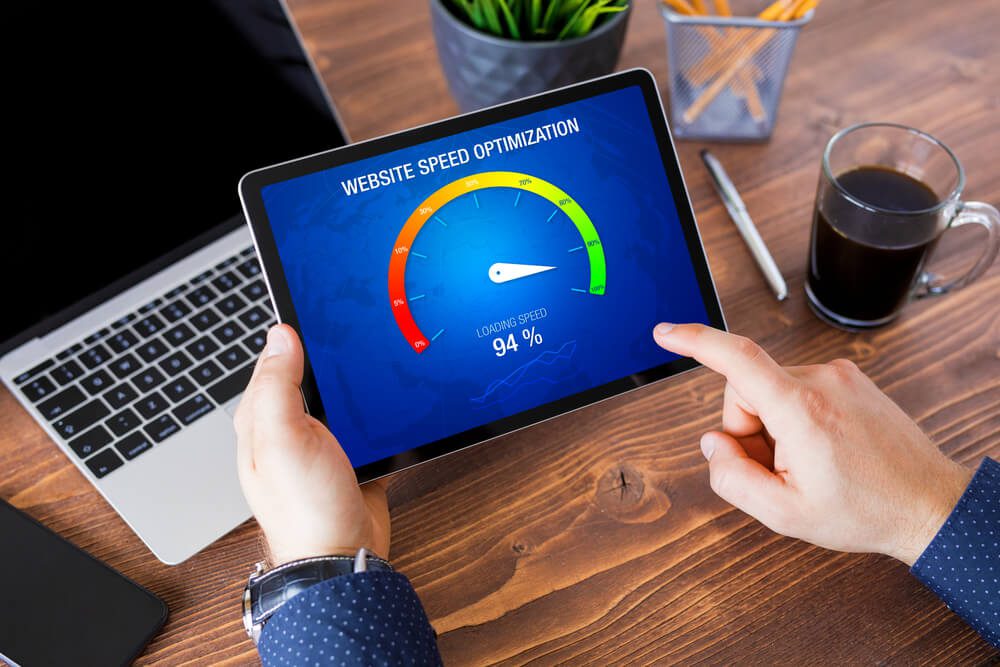
Upgrade Your Local SEO Ranking With the Best Technical SEO
- Creating an extensible markup language (XML) sitemap
- Using Google Search Console
- Removing broken links
- Allowing AMP for mobile accessibility
- Adding structured data markup
- Incorporating SLL
- Getting rid of duplicate content
- Enhancing website speed
Watch this video to learn how Digital Authority Partners tackles Technical SEO!
Create an XML Sitemap
An XML sitemap lists all the pages of a website, including information about the URLs, when they have last been updated, and how often they change. You submit an XTM sitemap to search engines, such as Google, Bing, or Yahoo, to help them efficiently crawl and index your website’s content. In local SEO, an XML sitemap ensures indexing and visibility of all local landing pages. By including location-specific URLs in the sitemap, search engines understand the geographic focus of a website and improve its visibility in local search results. To add an XML sitemap and fix technical SEO issues, follow these steps:1. Create an XML sitemap using a sitemap generator tool such as XML Sitemap Generator or plugins such as Yoast SEO for WordPress.
2. Upload the sitemap to the root directory of the website. If the domain name is “example.com,” the sitemap URL should be “example.com/sitemap.xml.”
3. Submit the sitemap to search engines such as Google, Bing, or Yahoo.
4. Verify the sitemap submission. It can take some time, but you can check the status in the webmaster tools.
Use Google Search Console
 Google Search Console, formerly Google Webmaster Tools, is a free web service provided by Google that helps monitor, maintain, and improve websites in Google search results. The tool provides website owners with valuable insights into how Google crawls and indexes websites. It can also identify technical issues and offer suggestions for improvements.
With Google Search Console, website owners can track the performance of their local landing pages and see how often these pages appear in search results, how many clicks they receive, and their average position or ranking.
Google Search Console also offers a structured data testing tool to verify correct implementation on the website. Follow these steps to optimize your Google Search Console account for local SEO:
Google Search Console, formerly Google Webmaster Tools, is a free web service provided by Google that helps monitor, maintain, and improve websites in Google search results. The tool provides website owners with valuable insights into how Google crawls and indexes websites. It can also identify technical issues and offer suggestions for improvements.
With Google Search Console, website owners can track the performance of their local landing pages and see how often these pages appear in search results, how many clicks they receive, and their average position or ranking.
Google Search Console also offers a structured data testing tool to verify correct implementation on the website. Follow these steps to optimize your Google Search Console account for local SEO:
1. Verify the website by adding a verification code or domain name. Afterward, access all the features of Google Search Console.
2. Set up the preferred domain through the “Settings” section in the sidebar and select “Site Settings.”
3. Submit the sitemap to Google Search Console by navigating to the “Sitemaps” section in the sidebar and clicking “Add a new sitemap.”
4. Check crawl errors through the “Coverage” section and fix them.
5. Monitor search performance.
6. Use the “Rich Results” report to verify the website’s structured data is correctly implemented.
Remove Broken Links
A broken link points to a web page that no longer exists. It can be an internal link (pointing to other pages of the same website) or an external link (pointing to other websites). Having broken links is a problem for local SEO because these can frustrate users. Broken links decrease website traffic and engagement, making it more difficult for a website to rank for relevant search terms. You can improve user experience, increase website authority, and improve local SEO by fixing broken links. Avoid this common technical SEO mistake; these tips can help fix broken links:- Find broken links with a link checker tool.
- Use a 404-error page that is informative and helpful to users.
- Monitor the website regularly for broken links.
- Redirect broken links to relevant pages on the website.
- Remove unfixable broken links.
Allow AMP for Mobile Accessibility
 The Accessibility Management Platform (AMP) for mobile accessibility is a set of guidelines and tools to make pages more accessible to people with disabilities. It covers various accessibility issues, including screen reader compatibility, keyboard navigation, and color contrast.
AMP for mobile accessibility is also essential to local SEO because Google has revealed that it prefers AMP pages in local search results. Businesses that use AMP pages are more likely to appear higher in local search results. Moreover, AMP pages load much faster than traditional web pages. Faster load time can lead to a better user experience and a higher conversion.
Finally, people are more likely to share AMP pages on social media because they are user-friendly. Here are the steps for adding AMP pages to improve local SEO:
The Accessibility Management Platform (AMP) for mobile accessibility is a set of guidelines and tools to make pages more accessible to people with disabilities. It covers various accessibility issues, including screen reader compatibility, keyboard navigation, and color contrast.
AMP for mobile accessibility is also essential to local SEO because Google has revealed that it prefers AMP pages in local search results. Businesses that use AMP pages are more likely to appear higher in local search results. Moreover, AMP pages load much faster than traditional web pages. Faster load time can lead to a better user experience and a higher conversion.
Finally, people are more likely to share AMP pages on social media because they are user-friendly. Here are the steps for adding AMP pages to improve local SEO:
1. Choose the pages you want to turn into AMP pages. These pages are essential to your business.
2. Enable AMP for these pages using a third-party AMP plugin or the Google AMP Cache.
3. Submit AMP pages to Google Search Console.
4. Promote AMP pages by adding a link to AMP pages to the website’s footer or header or promoting these on social media.
5. Use relevant keywords in the AMP page titles and descriptions.
Add Structured Data Markup
Structured data markup adds information about a website’s content to the HTML code. Search engines use this information to better understand the scope so it can be accurately displayed in search results. Several types of structured data markup exist, each representing a specific type of information. For example, you can use a type of markup for recipes, products, events, and businesses. Adding structured data markup can help you boost rankings and appear in rich results. These highlighted search results include additional information such as star ratings, prices, and images. Also, structured data markup attracts more user clicks because of rich results. Consider these strategies for adding structured data markup:- Choose the right type of structured data markup.
- Ensure the markup is accurate and complete.
- Test the markup to ensure it works properly.
- Regularly update the markup.
Improve Your Business Listings
 Google’s local search results should show your business listings. They include your business name, address, phone number, website, and hours of operation. Business listings are essential for local SEO because they improve visibility in local search results.
A business with complete and accurate information is likely to appear at the top of search results. Use these techniques to improve your business listings and increase local visibility:
Google’s local search results should show your business listings. They include your business name, address, phone number, website, and hours of operation. Business listings are essential for local SEO because they improve visibility in local search results.
A business with complete and accurate information is likely to appear at the top of search results. Use these techniques to improve your business listings and increase local visibility:
- Ensure the name, address, and phone number (NAP) are consistent across all online listings.
- Claim and verify your business listings with Google Business Profile (GBP).
- Regularly update them to ensure they are accurate.
- Include relevant keywords in your business listings.
- Encourage customers to leave reviews.
- Promote your business listings on social media.
Get Rid of Duplicate Content
Duplicate content appears on multiple websites, including text, images, videos, and other types of content. It can affect local SEO because search engines cannot easily find the source of duplicate content. This issue can lead to more ranking and visibility problems. Duplicate content dilutes the value of your website. If you have this type of content, search engines might assume that your website is not original, resulting in your lower search ranking. These strategies can help avoid duplicate content:- Add canonical URLs to tell search engines which page is the original version of a page.
- Scan the website using a plagiarism checker to identify and remove duplicate content.
- Create unique titles and descriptions for the website’s pages.
- Use different keywords for the website’s pages.
- Avoid the same content for multiple pages of the website.
Enhance Website Speed
 Website speed affects your brand reputation and ranking in Google’s local search results. Google’s algorithms consider various factors when ranking sites, including page speed. Websites that take longer to respond can frustrate users and increase your bounce rate.
Technical SEO benefits local businesses, and one of the advantages is ensuring websites are fast. You can use the techniques below to improve your website’s speed:
Website speed affects your brand reputation and ranking in Google’s local search results. Google’s algorithms consider various factors when ranking sites, including page speed. Websites that take longer to respond can frustrate users and increase your bounce rate.
Technical SEO benefits local businesses, and one of the advantages is ensuring websites are fast. You can use the techniques below to improve your website’s speed:
- Use a content delivery network (CDN).
- Minify and optimize CSS and JavaScript files.
- Compress images.
- Defer non-critical JavaScript.
- Use a caching plugin.
- Move the website to a faster host.
Summing Up
Remember these top technical SEO strategies to upgrade your website’s local SEO ranking. Technical SEO is critical to local website optimization and should be part of your local marketing campaign. By partnering with an expert San Diego technical SEO agency such as Digital Authority Partners, you can guarantee better local rankings, higher foot traffic, more sales, and higher revenue. Don’t miss your chance, and contact DAP today.Want To Meet Our Expert Team?
Book a meeting directly here



